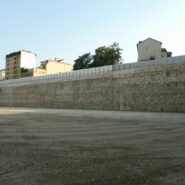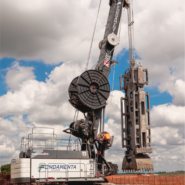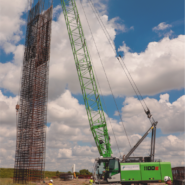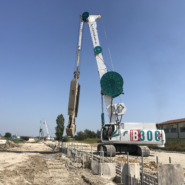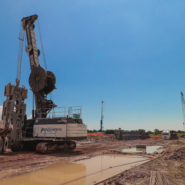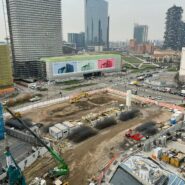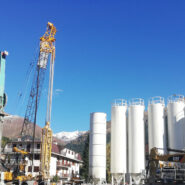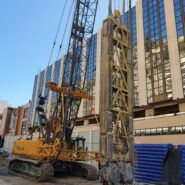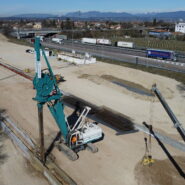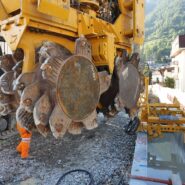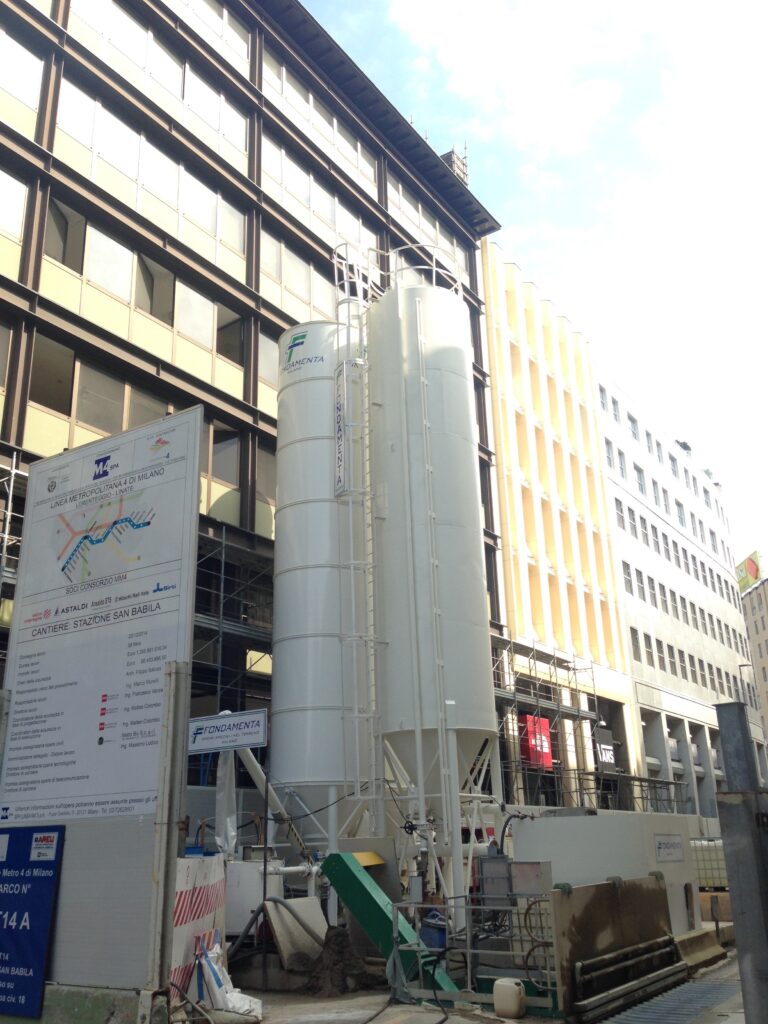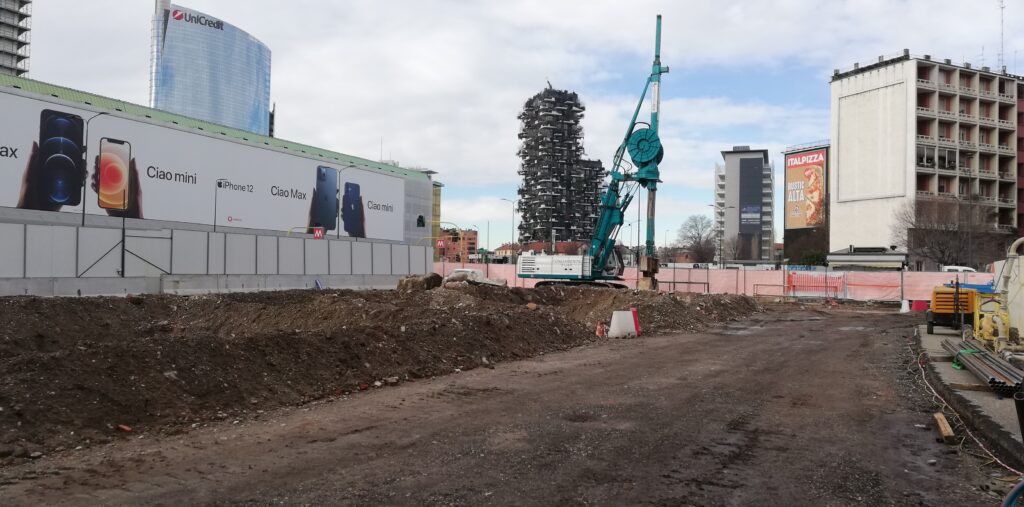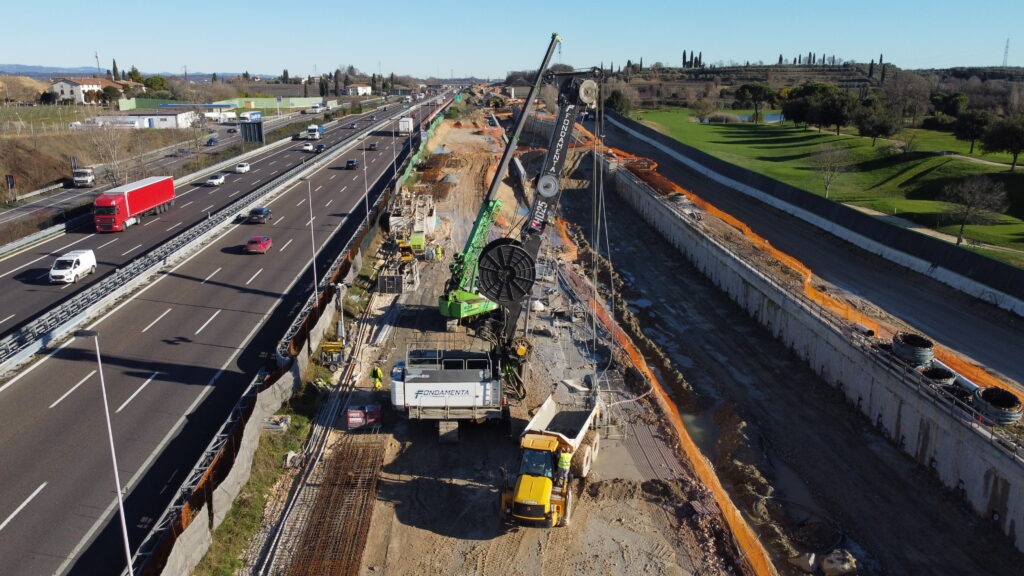Diaphgrams
Diaphragms are vertical structural elements used to contain and support the soil in civil engineering works. Known as retaining walls, they are essential for the stability of deep excavations, foundations, and underground structures. Used in various projects, including tall buildings, tunnels, bridges, and transport infrastructures, they also serve to waterproof riverbanks and prevent siphoning.
Reinforced Concrete Diaphragms
A reinforced concrete diaphragm typically consists of:
- Concrete: Provides compressive strength.
- Steel Reinforcement: Bars placed inside the concrete to offer tensile strength and enhance load-bearing capacity.
- Construction Joints: Connect the diaphragm segments, ensuring structural continuity and waterproofing.
Functions of Reinforced Concrete Diaphragms
- Soil Support: Designed to support surrounding soil and prevent collapses during deep excavations.
- Waterproofing: Act as impermeable barriers, preventing water infiltration into excavations and underground structures.
- Load Transfer: Distribute vertical and horizontal loads from overlying structures to deep foundations, enhancing overall stability.
- Excavation Stabilization: Provide temporary support during excavation phases, ensuring site and nearby structure safety.
Types
- Retaining Walls: Primarily support soil during excavations, can be temporary or permanent.
- Waterproof Retaining Walls: Designed to prevent water infiltration, used in areas with high water tables or near water bodies.
- Foundation Retaining Walls: Integral to a building’s foundation, transferring loads from overlying structures to deep foundations.
- Containment Retaining Walls: Used to contain loose materials or stabilize unstable soils.
Applications
- Buildings: Essential for constructing buildings requiring deep excavations and stable foundations.
- Underground Works: Used in projects like subways, underground parking, and tunnels, crucial for soil stability.
- Hydraulic Projects: Employed in dams, canals, and other hydraulic works to prevent infiltration and ensure structure stability.
- Transport Infrastructures: Stabilize soil near bridges, roads, and railways.
Advantages
- High Strength: The combination of concrete and steel reinforcement provides excellent compressive and tensile strength.
- Waterproofing: Can be designed to be completely waterproof, protecting underground structures from water infiltration.
- Versatility: Suitable for various geotechnical and environmental conditions.
- Durability: Offer long operational life, resisting adverse environmental conditions and cyclic loads.
- Minimal Environmental Impact: Installation technique reduces impact on existing structures and the surrounding environment.
Design of Diaphragms
Designing reinforced concrete diaphragms requires a thorough evaluation of site conditions and the stresses they will endure. Key factors include:
Geotechnical Analysis: Assessing soil properties to determine bearing capacity and waterproofing needs.
- Structural Loads: Considering vertical and horizontal loads the diaphragm will bear.
- Hydraulic Conditions: Presence of water tables and water infiltration risks.
- Regulations and Standards: Compliance with local and international norms to ensure safety and quality.
- Durability and Maintenance: Selecting materials and construction techniques to ensure longevity and reduce maintenance costs.
Related projects
Are you interested in this service?
Contact us by filling the form.

